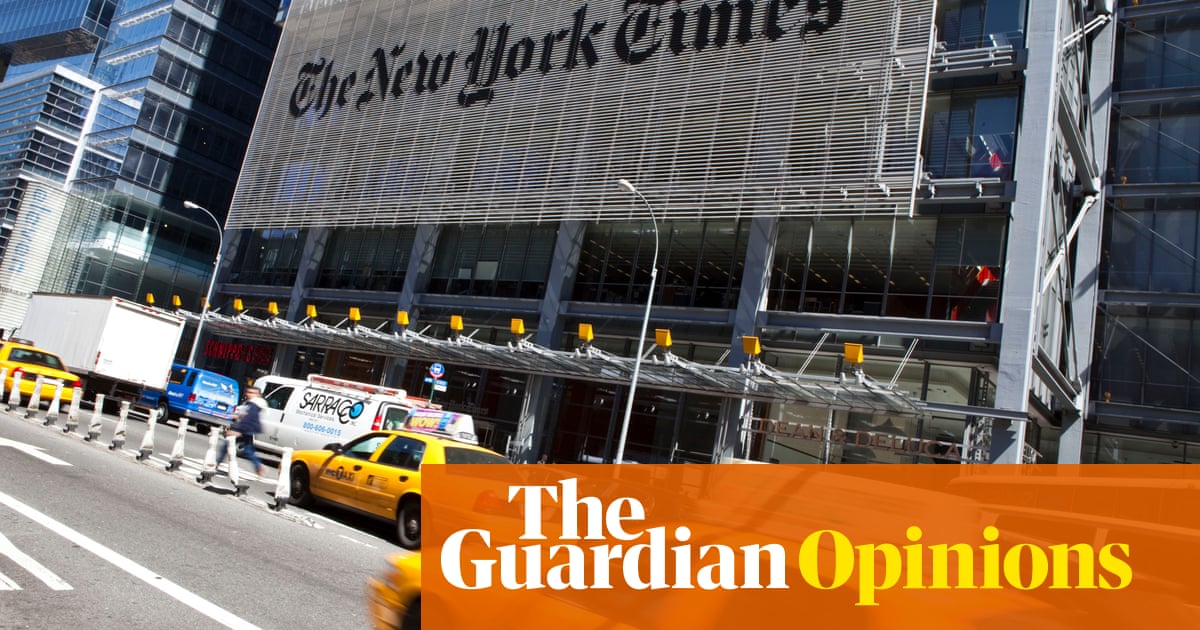A handful of legacy institutions thrive as digital startups face increasing pressures

The financial health of journalism has been deteriorating in such an acute way that every spit and cough emanating from its institutions is anxiously pored over to ascertain whether its a death rattle or a sign of miraculous recovery. An outcome few would have predicted for the future of media has been the resilience of a handful of decidedly old-fashioned legacy institutions, at the cost of the shrinking of the supposedly more innovative digital players.
The new gatekeepers of the global media, which are mostly American and Chinese mega-platforms such as Facebook, WeChat, YouTube, Google, Apple and co, have created a business environment that is inherently hostile towards free, advertising-supported media.
Costly journalism is the first casualty of an advertising model that favours these online platforms. Those organisations that have unbelievably survived the past 15 years of digital onslaught are defined by both the presence of mission and money.
Take for instance the New York Times, the midtown Manhattan local news organisation which is transforming itself into a global digital news brand. Historically characterised by its preponderance of seersucker suits and Mont Blanc pens, the Grey Lady was on the critical list a decade ago. Weakened by the financial crisis, its market capitalisation had halved to $1.5bn (1.16bn) and its lavishly staffed newsroom numbers were heading south of 1,300. When it introduced a paywall in 2011 it felt like a last roll of the dice.
Even as recently as 2013 former publisher Arthur Sulzberger noted that it was a very low moment when the New York Timess biggest rival, the Washington Post, was sold by the Graham family to Amazon billionaire Jeff Bezos.
Last week, the New York Times emerged from its period of digital transition as a financially stronger, editorially robust organisation. It hit its very ambitious target of earning $800m per annum through digital revenues 12 months early and its share price rose to a 15-year high.
The newsroom, no doubt too busy to celebrate as it documents the unravelling of American politics, is at a historic high level of 1,700 journalists.
Ironically, this remarkable revival in both its subscription base and its share performance stems from the policies of Donald Trump. Digital subscriptions have boomed as the progressive audience sees support for reporting institutions like the New York Times as the only effective opposition to a corrupt government.
And the stock market boom, as we are constantly reminded by the presidents Twitter feed, is peaking on the basis of an economic policy that largely favours rich business owners at the cost of everyone else.
The revolving door between media organisations is in constant motion, but as the layoffs in local and digital news outlets continue, the New York Times is hiring many more than it is firing. Many of those who have joined as either staff or columnists come from the world of digitally native publishing.
Ben Smith, former editor-in-chief at BuzzFeed, left the newsroom he founded to join the New York Times as a media columnist. Pioneers of journalism startups such as Kara Swisher, Americas best-known technology reporter and commentator, joined the huge roster of writers. Choire Sicha, a key founder of defunct but highly influential sites such as Gawker and the Awl, now heads the styles section. Taylor Lorenz has joined, bringing with her beat reporting on influencers and TikTok, making the New York Times relevant to a whole new audience. The Daily Podcast is also hugely popular among younger audiences. This isnt how the future was meant to be.
Chief executive, and former BBC director general, Mark Thompson put the success of the New York Times down to a strategy that allowed the digital assets within the news organisation to grow independently of the gravitational pull of the still-declining print product. Crosswords and cookery, both addictive and slick digital offerings, are far more important in revenue terms than their positions in a printed package would indicate.
However, theres something else at play here which has more to do with the political and economic environment.
An aging audience of wealthy newspaper subscribers helped get the New York Times across the wobbly bridge to a digital world, where now, the same elderly subscribers have embraced digital subscriptions on their iPhones.
From here the process will be one of perpetual change, but one led by the elite legacy institutions. The New York Times, in one sense, is a spectacular and hopeful success story. But in other ways it reveals the disastrous state of the current media landscape. Connectivity has sorted society into the 1% and the rest. Winners taking it all are a feature, not a bug, of the current technocracy. If Smith, a far-sighted editor deeply invested in his staff and newsroom at BuzzFeed, could not see a sufficiently attractive path forward, then there probably isnt one.

Against these lessons from America, the Conservative partys attitude towards news media looks wilfully inadequate. Despite debating the Cairncross reviews recommendations on how to keep public service journalism plural and sustainable, the government rejected its most vital recommendation: that through a newly created Institute for Public Interest News, there should be a sustained and well-researched effort to ensure British media does not devolve into a 1% market.
The adaptation of the BBC as an extended platform to support local reporting was also effectively nixed by budget cuts. Further pressure on funding comes from the governments dogged determination to decriminalise the licence fee; a consultation on the matter was launched only this week. Facebooks refusal to curb lies in political advertising has been immediately rewarded by the culture, media and sport select committee switching emphasis from probing platform power to exploring how to diminish public service media.
The culture secretary Nicky Morgans most high profile utterance on the task of rethinking media was to urge the BBC to be more digitally adaptable, so as to not end up like video rental chain Blockbuster. It should be far more concerning to Morgan and the British electorate that instead the BBC ends up like Netflix: undifferentiated, afloat only on borrowed money, and inherently uninterested in the cultural needs of a population that needs reliable news.
Original Article : HERE ;
from MetNews https://metnews.pw/the-new-york-timess-success-lays-bare-the-medias-disastrous-state-emily-bell/
No comments:
Post a Comment